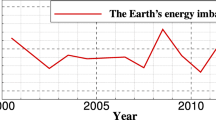Abstract
Hawaii generates the majority of its electricity through oil-fired generation. New production technologies have led to rapidly declining natural gas prices that has renewed Hawaii’s interest in liquefied natural gas (LNG) imports. This study integrates a detailed model of Hawaii’s electric sector with a computable general equilibrium model of Hawaii’s economy to estimate the economic and greenhouse gas (GHG) impacts of importing LNG for use in the electric sector. Incorporating a range of possible price pathways (low, medium and high) out to the year 2040 for LNG imports, we find Hawaii could lower electric sector costs in a range from 6 to 16 % and petroleum refining output declines by over 20 % (in 2040). Gross state product increases in a range of $300 million to $5 billion in net present value. Using natural gas reduces out-of-stack GHG emissions but can also increase GHG emissions in other jurisdictions. Moreover, introducing natural gas could reduce the incentive to pursue renewable energy and energy efficiency. As such, adopting and enforcing policies encouraging renewable energy and efficiency becomes even more important to meet Hawaii’s clean energy and GHG mitigation goals.






Similar content being viewed by others
Notes
Excluding aviation-related GHG emissions.
The bio-oil forecast is based on the EIA’s forecast for ethanol prices. In addition, a minimum cost assumption is made in that the price of bio-oil cannot drop below that of crude oil.
Household electricity demand is estimated from the number of people in a household and typical per capital consumption (6 kWh/day), which is adjusted according to household income and an assumed income elasticity of demand for electricity (0.5). We assume that PV is installed such that the household’s electricity use is effectively cancelled out based on the existing Net Metering Agreement.
Since FGE’s LNG price projections are based on the imported crude oil price in AEO 2012, we adjust their forecast to AEO 2015 by applying the percent change between the AEO 2012 and AEO 2015. We convert FGE’s forecast from $2012/MMBtu to $2007/MMBtu using the US Consumer Price Index (CPI), and since their price projections end at 2030, we extend their forecast through 2040 using the difference between years in Galway’s middle demand scenario. Similarly for Galway, we convert their forecast from AEO 2013 to be consistent with AEO 2015.
To a lesser extent, boil off and regasification loss are factored into the delivered cost.
FGE uses estimates from their Shipping Rate Calculation Model for a 25,000 cbm tanker under the assumption of a Jones Act waiver for gas sourced from the US West Coast, USGC, and Alaska. For the US West Coast, the cost of transporting LNG via ATBs is equivalent to non-US tanker rates, implying that the Jones Act does not impact costs. Shipping USGC-sourced gas costs two-and-half-times as much as from the US West Coast since twice the distance is covered and Panama tolls are incurred enroute. Galway on the other hand, assumes Jones Act compliant vessels for shipping gas from the US West Coast and USGC (i.e. cost of complying with Jones Act is accounted for in shipping costs). Transportation costs vary by supply source, vessel type, and LNG volume.
Regasification costs are illustrative of both an onshore terminal and various FSRU configurations. On an energy content basis ($/MMBtu), the range between the two alternatives is relatively small. FGE models an onshore terminal while Galway assumes regasification costs for FSRUs (US GoM-2xFSRU double buoy, Jordan Cove-Dockside FSRU, Canada-2xFSRU double buoy).
The shares shown in Fig. 2 are based on electricity sales, which is the unit of measurement for compliance with the RPS law. The difference between generation and sales account for transmission and distribution losses, which we here assume to be 8 %. As such, the percentage shares shown for the years 2015 and 2040 exceed 100 %.
We estimate the impact to electricity rates by assuming that Hawaiian Electric Co.’s “base rate” accounts for all O&M costs. We take the most recent “Effective Rate Summaries,” filed to the PUC in July 2014, and multiply the residential base rate by the estimated electric sector cost savings (HECO 2014). We then add on the difference between the effective and base rate.
References
Argonne National Laboratory (2010) The greenhouse gases, regulated emissions, and energy use in transportation model. U.S. Department of Energy. http://greet.es.anl.gov/ (Accessed 14 Sept 2011)
Argonne National Laboratory (2014) Updated fugitive greenhouse gas emissions for natural gas pathways in the GREET. U.S. Department of Energy. https://greet.es.anl.gov/publication-ch4-updates-13
Coffman M, Bernstein P (2014) Linking Hawaii’s Islands with wind energy. Ann Reg Sci 54(1):1–21
Coffman M, Griffin J, Bernstein P (2012) An assessment of greenhouse gas emissions-weighted clean energy standards. Energy Policy 45:122–132
GE Consulting (2012) Hawaii Solar Integration Study. Final technical report for Maui. Prepared for the US DOE Office of Electricity Delivery and Energy Reliability Under Cooperative Agreement No. DE-FC26-06NT4284. Submitted to the Hawaii Natural Energy Institute. http://www.hnei.hawaii.edu/sites/www.hnei.hawaii.edu/files/130325%20MAUI%20Integration%20-%20Final%20Report.pdf
Department of Business Economic Development, and Tourism (DBEDT) (2014) Hawaii energy facts and figures May 2014. http://energy.hawaii.gov/wp-content/uploads/2011/08/HI-Energy-FactsFigures_May2014_2r.pdf
Department of Business, Economic Development, and Tourism (DBEDT) (2011) The Hawaii State Input-Output Study: 2007 Benchmark Report. State of Hawaii. http://hawaii.gov/dbedt/info/economic/data_reports/2007-io/
Facts Global Energy (FGE) (2007) Evaluating natural gas import options for the state of Hawaii. Prepared for the Hawaii Energy Policy Forum, The Hawaii Natural Energy Institute, and The Office of Hawaiian Affairs. https://www.eere-pmc.energy.gov/states/Hawaii_Docs/FGE-Evaluating_Natural_Gas_Import_Options_for_Hawaii-Revised.pdf
Facts Global Energy (FGE) (2012) Liquefied natural gas for Hawaii: policy, economic, and technical questions. Prepared for the Hawaii Natural Energy Institute. http://www.hnei.hawaii.edu/sites/web41.its.hawaii.edu.www.hnei.hawaii.edu/files/story/2013/01/Liquefied%20Natural%20Gas%20for%20Hawaii%20Policy%20Economic%20and%20Technical%20Questions-FINAL.pdf
Galway Energy Advisors (2013) Appendix N: LNG imports to Hawaii. Prepared for Hawaiian Electric Company. http://www.hawaiianelectric.com/heco/_hidden_Hidden/Renewable-Energy/2013-IRP-Report-Chapters-and-Appendices?cpsextcurrchannel=1
Hawaii Administrative Rules (HAR). Chapter 11-60.1, Air Pollution Control
Hawaii Electric Light Company (HELCO) (2006) Appendix P IRP-3 Supply-Side Portfolio Update. http://www.helcohi.com/vcmcontent/HELCO/RenewableEnergy/IRP/AppendixP_HELCO_IRP3_Final_SRO_Rpt.pdf
Hawaii Electric Light Company (HELCO) (2009) Docket No. 2009-0164: Notice of Intent to File an Application for a General Rate Increase. Application Filed on December 9, 2009. HELCO 2010 Test Year; Workpapers in Support of Direct Testimonies, Book 2 of 9. State of Hawaii, Public Utilities Commission
Hawaii Electric Light Company (HELCO) (2012a) Docket No. 2012-0099. Historical Purchased Power Expenses. HELCO 2013 Test Year; Direct Testimonies and Exhibits; Book 2
Hawaii Electric Light Company (HELCO) (2012b) Docket No. 2012-0099: Application for Approval of Rate Increases and Revised Rate Schedules and Rules. HELCO Test Year 2013; Workpapers in Support of Direct Testimonies Book 1. State of Hawaii, Public Utilities Commission
Hawaii Natural Energy Institute (HNEI) (2011) Oahu Wind Integration Study. School of Ocean and Earth Science and Technology. http://www.hnei.hawaii.edu/sites/web41.its.hawaii.edu.www.hnei.hawaii.edu/files/story/2011/03/Oahu_Wind_Integration_Study.pdf
Hawaiian Electric Companies (2013) 2013 Integrated Resource Planning Report. http://www.hawaiianelectric.com/heco/Clean-Energy/Integrated-Resource-Planning
Hawaiian Electric Company (HECO) (2005) Appendix O IRP-3 Supply-Side Portfolio Update. http://www.heco.com/vcmcontent/FileScan/PDFConvert/HECO_IRP3_App_O_Final.pdf
Hawaiian Electric Company (HECO) (2008) Docket No. 2008-0083: Notice of Intent to File a General Rate Increase Application. Application Filed on July 3, 2008. HECO 2008 Test Year; Workpapers in Support of Direct Testimonies, vol 8, Book 3 of 7. State of Hawaii, Public Utilities Commission
Hawaiian Electric Company (HECO) (2010) Docket No. 2010-0080: Notice of Intent to File a General Rate Increase Application. Application Filed on July 30, 2010. HECO 2011 Test Year; Workpapers in Support of Direct Testimonies, vol 10. State of Hawaii, Public Utilities Commission
Hawaiian Electric Company (HECO) (2014) Effective rate summaries filed July 2, 2014. http://www.hawaiianelectric.com/vcmcontent/StaticFiles/FileScan/PDF/EnergyServices/Tarrifs/HECO/EFFRATESJULY2014.pdf
Hawaiian Electric Companies (2014) Statement from the Hawaiian Electric Companies regarding Hawaii PUC's Energy Policy Decisions. Available at:http://www.hawaiianelectric.com/heco/_hidden_Hidden/CorpComm/Statement-from-the-Hawaiian-Electric-Companies-regarding-Hawaii-PUC's-Energy-Policy-Decisions?cpsextcurrchannel=1
Heath G, O'Donoughue P, Arent D, Bazilian M (2014) Harmonization of initial estimates of shale gas life cycle greenhouse gas emissions for electric power generation. Proc Natl Acad Sci 111(31):E3167–E3176
Howarth RW, Santoro R, Ingraffea A (2011) Methane and the greenhouse-gas footprint of natural gas from shale formations. Clim Change 106(4):679–690
Hultman N, Rebois D, Scholten M, Ramig C (2011) The greenhouse impact of unconventional gas for electricity generation. Environ Res Lett 6(4):044008
ICF International (2013) Hawaii Refinery Task Force—Refinery Closure Report. Interim Report. Submitted to the Hawaii Department of Business Economic Development and Tourism. http://energy.hawaii.gov/wp-content/uploads/2011/10/HRTF_InterimRpt_11.12.13.pdf
Intergovernmental Panel on Climate Change (IPCC) (2007) IPCC fourth assessment report (AR4). Working Group 1, The Physical Science Basis. http://www.ipcc.ch/publications_and_data/ar4/wg1/en/contents.html
International Energy Agency (IEA) (2012) Golden rules for a golden age of gas. World Energy Outlook Special Report on Unconventional Gas. http://www.worldenergyoutlook.org/media/weowebsite/2012/goldenrules/WEO2012_GoldenRulesReport.pdf
Kauai Island Utility Cooperative (KIUC) (2008) Integrated Resource Plan. http://kauai.coopwebbuilder.com/sites/kauai.coopwebbuilder.com/files/irp2008_2008_kiuc_irp.pdf
Kauai Island Utility Cooperative (KIUC) (2009) Docket No. 2009-0050: Notice of Intent to File an Application for a General Rate Increase. Application Filed on June 30, 2009. Kauai Island Utility Cooperative’s Responses and Attachments to the Division of Consumer Advocacy’s First Submission of Information Requests, vol 6. State of Hawaii
Maui Electric Company (MECO) (2005) Appendix O IRP-3 Supply-Side Portfolio Update. http://www.mauielectric.com/vcmcontent/MECO/RenewableEnergy/IRP/AppendixK_MECOIRP3SupplySidePortfolioUpdate.pdf
Maui Electric Company (MECO) (2009) Docket No. 2009-0163: Notice of Intent to File an Application for a General Rate Increase. Application Filed on September 30, 2009. MECO 2010 Test Year; Workpapers in Support of Direct Testimonies, Book 3 of 11. State of Hawaii, Public Utilities Commission
National Energy Technology Laboratory (NETL) (2014) Life Cycle Greenhouse Gas Perspective on Exporting Liquefied Natural Gas from the United States. U.S. Department of Energy (DOE). http://energy.gov/sites/prod/files/2014/05/f16/Life%20Cycle%20GHG%20Perspective%20Report.pdf
Renewable Standards Working Group (RSWG) (2013). Renewable Standards Working Group Independent Facilitator’s Submittal. Submitted to the State of Hawaii PUC under Docket 2011-0206. http://puc.hawaii.gov/wp-content/uploads/2013/04/RSWG-Facilitators-Report.pdf
Shimogawa D (2014) Hawaiian Electric may begin shipping LNG in 2016 to multiple islands. Pacific Business News. http://www.bizjournals.com/pacific/blog/morning_call/2014/03/hawaiian-electric-to-begin-shipping-in-lng-in-2016.html?page=all
Shindell DT, Faluvegi G, Koch DM, Schmidt GA, Unger N, Bauer SE (2009) Improved attribution of climate forcing to emissions. Science 326:716–718
Star Advertiser (2012) Groups oppose plan to ship LNG to Hawaii. http://www.staradvertiser.com/news/breaking/175027301.html?id=175027301
State of Hawaii (2008) Energy Agreement among the State of Hawaii, Division of Consumer Advocacy of the Department of Commerce and Consumer Affairs, and The Hawaiian Electric Companies. http://files.hawaii.gov/dcca/dca/HCEI/HECI%20Agreement.pdf
Stephenson E, Doukas A, Shaw K (2012) Greenwashing gas: might a ‘transition fuel’ label legitimize carbon-intensive natural gas development? Energy Policy 46:452–459
U.S. Census Bureau (2012) 2007–2011 American Community Survey (Hawaii)
U.S. Department of Energy (DOE) (2013) Hawaii 50-Meter Wind Map. Wind Program, Energy Efficiency and Renewable Energy. http://www.windpoweringamerica.gov/maps_template.asp?stateab=hi
U.S. Department of Transportation Maritime Administration (MARAD) (2011) Comparison of U.S. and Foreign-Flag Operating Costs. http://www.marad.dot.gov/documents/Comparison_of_US_and_Foreign_Flag_Operating_Costs.pdf
U.S. Energy Information Administration (EIA) (2010–2012a). Form EIA-860 detailed data. U.S. Department of Energy. http://www.eia.gov/electricity/data/eia860/index.html
U.S. Energy Information Administration (EIA) (2010–2012b) Form EIA-923 detailed data. U.S. Department of Energy. http://www.eia.gov/electricity/data/eia923/
U.S. Energy Information Administration (EIA) (2013a) Electricity. U.S. Department of Energy. http://www.eia.gov/electricity/data/state/avgprice_annual.xls
U.S. Energy Information Administration (EIA) (2013b) U.S. Department of Energy. Form EIA-860 detailed data. http://www.eia.gov/electricity/data/eia860/
U.S. Energy Information Administration (EIA) (2015) Annual Energy Outlook 2015. U.S. Department of Energy
U.S. Environmental Protection Agency (EPA) (2014) Natural Gas. http://www.epa.gov/cleanenergy/energy-and-you/affect/natural-gas.html (Accessed 20 July 2014)
Wicke B, Dornburg V, Junginger M, Faaij A (2008) Different palm oil production systems for energy purposes and their greenhouse gas implications. Biomass Bioenergy 32:1322–1337
Wigley TML (2011) Coal to gas: the influence of methane leakage. Clim Change 108:601–608
Yonan A (2014) HECO may ship LNG in containers. Star Advertiser. http://www.staradvertiser.com/businesspremium/20140313__HECO_may_ship_LNG_in_containers.html?id=250017221&c=n
Acknowledgments
We would like to acknowledge and thank the University of Hawaii Economic Research Organization and the Center for Global Partnership, Japan Foundation, for support of this research.
Author information
Authors and Affiliations
Corresponding author
About this article
Cite this article
Coffman, M., Bernstein, P., Wee, S. et al. Economic and GHG impacts of natural gas for Hawaii. Environ Econ Policy Stud 19, 519–536 (2017). https://doi.org/10.1007/s10018-016-0157-2
Received:
Accepted:
Published:
Issue Date:
DOI: https://doi.org/10.1007/s10018-016-0157-2




